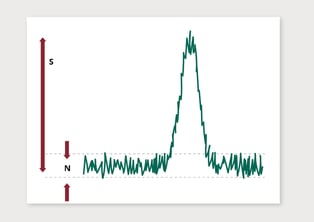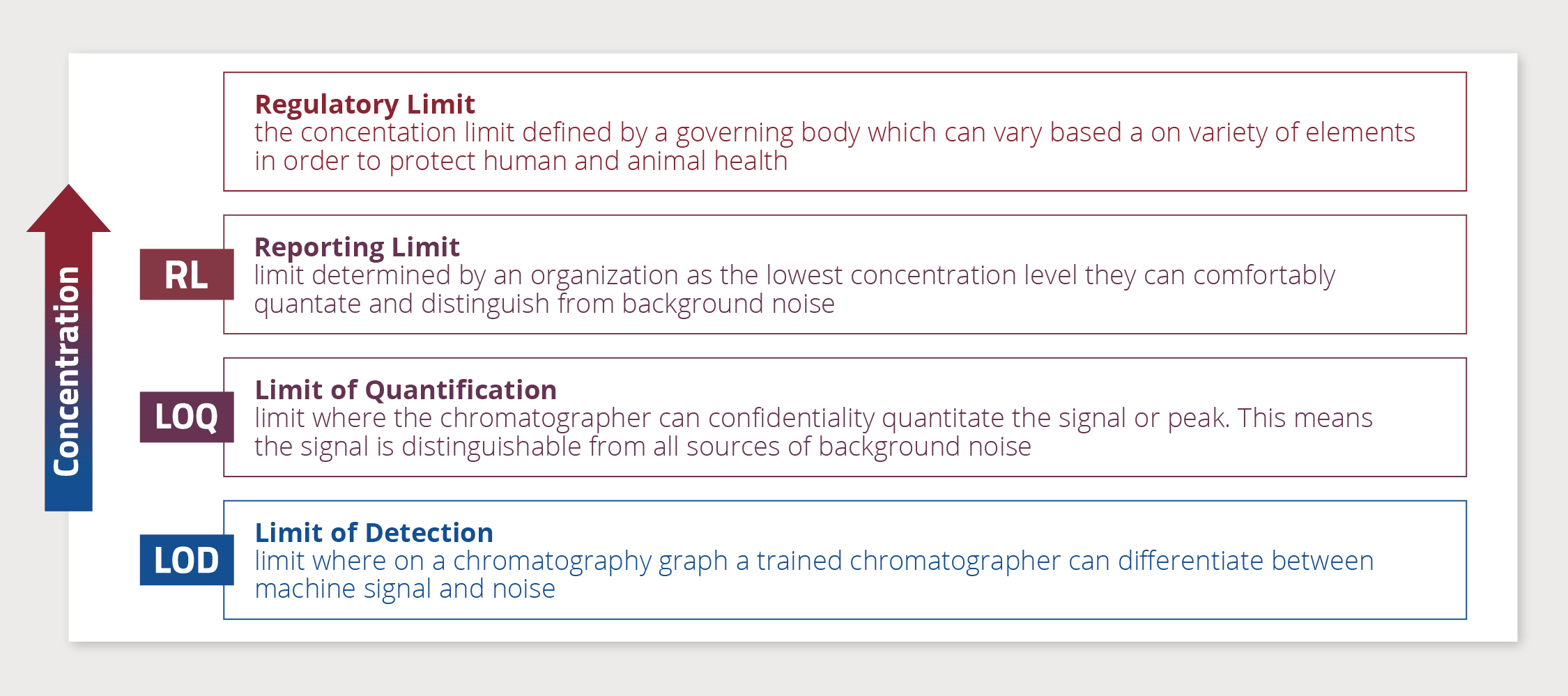Analytical acronyms can be tricky to understand, especially when they pertain to important results on a certificate of analysis.
A long list of variables go into reporting that final result to the customer and relying on a knowledgeable laboratory to make trusted decisions relating to concentration evaluations is a critical parameter in the process. The following laboratory terminology often appear on a customer’s certificate of analysis, but what do they scientifically mean?
Limit of Detection (LOD) or Detection Limit (DL)
The baseline produced from the chromatography equipment, such as HPLC, LC-MS, LC-MS/MS, or GC, is a result of multiple components:
- Machine noise is specific and directly relates to the components of the individual machine like the detector and lamp.
- Solvent noise is caused by using solvents with a lower level of purity.
- Matrix noise comes from the sample matrix and differs from commodity to commodity.
The LOD/LD is the limit where on a chromatography graph a trained chromatographer can differentiate between the machine signal and noise.


Limit of Quantification (LOQ)
The LOQ is the limit where the chromatographer can confidentiality quantitate the signal or peak. This means the signal is distinguishable from all sources of background noise.
Standard laboratory practice is to ensure a 5:1 ratio of signal:noise, this ratio coupled with good chromatography gives the chromatographer the tools to set a lower level LOQ.
Reporting Limit (RL)
The RL is not an industry defined standard, the RL is determined by the technical experts of an organization as the lowest concentration level they can comfortably quantitate and distinguish from background noise. The RL differs from method to method, sample to sample and matrix to matrix.

Have a question?
Let's Stay Connected!




